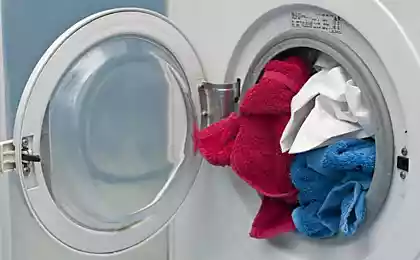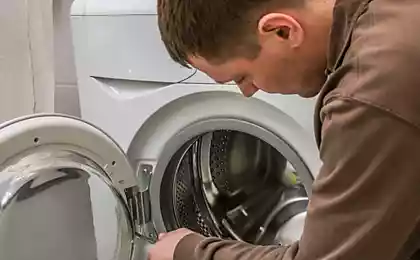139
What to consider when washing so as not to fix the washing machine every year
Some 100 years ago, women washed their clothes with coarse boards, rinsed their laundry in icy water, and hung them outdoors. In winter, this necessary household activity turned into a real test. Today, even a child knows, How to Wash Things in a Washing Machine And he can do this operation in a couple of taps. Unprecedented level of comfort!

Still, even experienced housewives when washing things in their favorite washing machine often manage to make stupid mistakes that shorten its service life or spoil the things themselves. We will try to avoid these troubles, because it does not require much effort.

How not to ruin the washing machine
We hope that our recommendations will allow you wash-machine More correctly, as a result of which it will last longer, and washed things will always please with cleanliness. Do not forget to tell what tricks you use if your washing machine has been running smoothly for many years.

Still, even experienced housewives when washing things in their favorite washing machine often manage to make stupid mistakes that shorten its service life or spoil the things themselves. We will try to avoid these troubles, because it does not require much effort.

- Ignoring the label
If the manufacturer on the tag indicated that the thing can only be cleaned in dry cleaning, then this advice should be heeded. Of course, it can be that the fabric will survive the delicate washing. But is it worth the risk if the thing is more likely to deteriorate and have to be thrown away? - Lots of bleach.
The tool is effective in itself. But if there is a lot of it, it only leads to the destruction of tissue, which becomes thinner and weaker. And if the product does not mix with water properly, it can lead to stains on clothes. So be careful with the bleach.
- High turnovers
Even the usual clothes can be quite capricious when washing. And if sheets and towels are often not afraid and 1400 revolutions per minute, then jeans tolerate a pressing speed of only 900. If we talk about more delicate fabrics, then you need to choose a pressing mode of up to 400 revolutions per minute. Too intense regimes quickly make things unusable. - Unbuttoned lightning
This element should be fastened before placing the thing in the washing machine. The fact is that the unbuttoned lightning can easily catch other clothes, which will inevitably lead to damage. - Things inside out
Many people do not know that jeans must be turned inside out before washing. The same should be done with delicate fabrics. By the way, a cotton shirt, blouse or sweater are also washed in an inverted form, which allows you to save the fabric from damage when pressed.
How not to ruin the washing machine
- Cleaning.
If the washing machine is dirty on its own, how can it guarantee the cleanliness of your belongings? And if the drum is shining like new, it doesn't say anything. Especially a lot of dirt and rust is formed near the rubber seals on the door. It will not be superfluous to clean the filter - after every 2-3 washes. - Ventilation
To your favorite assistant was always clean, it should not only be washed, but also aired. And after each wash, keep the washing machine door completely open for at least a couple of hours. Then the door can be left ajar only for a couple of centimeters. This will avoid mold on rubber seals, and the drum itself will be regularly ventilated. - detergent
Any washing tool is effective if you add it in the right amount. Do not think that more powder, gel or capsules will cope better. Excess foam can even come out, and the linen can be sticky after carefully rinsing.
- Volume of linen
Even if the instructions indicate a maximum load of 6 kg, this does not mean that you can hammer the drum to the end. Otherwise, there is a risk that the clothes will remain as dirty as before the wash, only wet and in the detergent. Therefore, spare the car and leave free space at least as high as the palm (preferably more). - Washing socks
After washing, can't you find a pair to wear? Often this happens because when the drum is heavily loaded, the sock is pressed to the edge and falls into a small gap between the drum and the seal. As a result, the owner will find his sock in vain. To prevent this from happening, experienced housewives advise to tie socks together before washing.
We hope that our recommendations will allow you wash-machine More correctly, as a result of which it will last longer, and washed things will always please with cleanliness. Do not forget to tell what tricks you use if your washing machine has been running smoothly for many years.



























